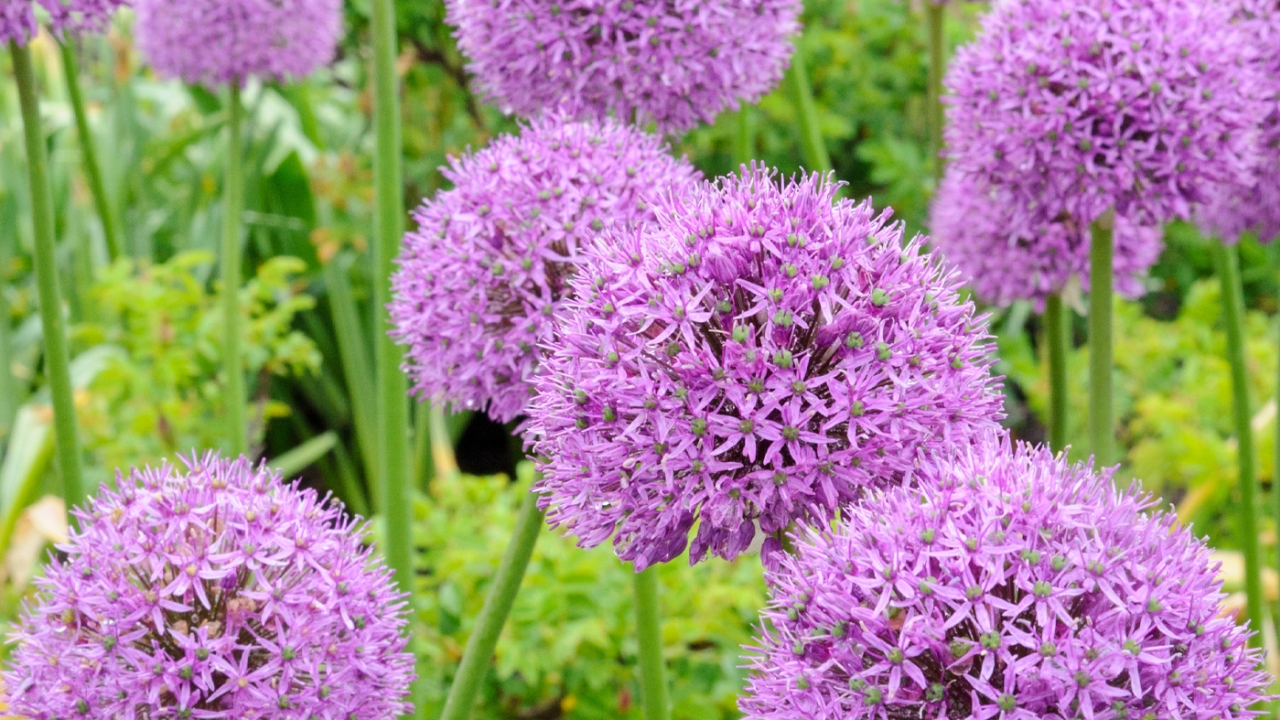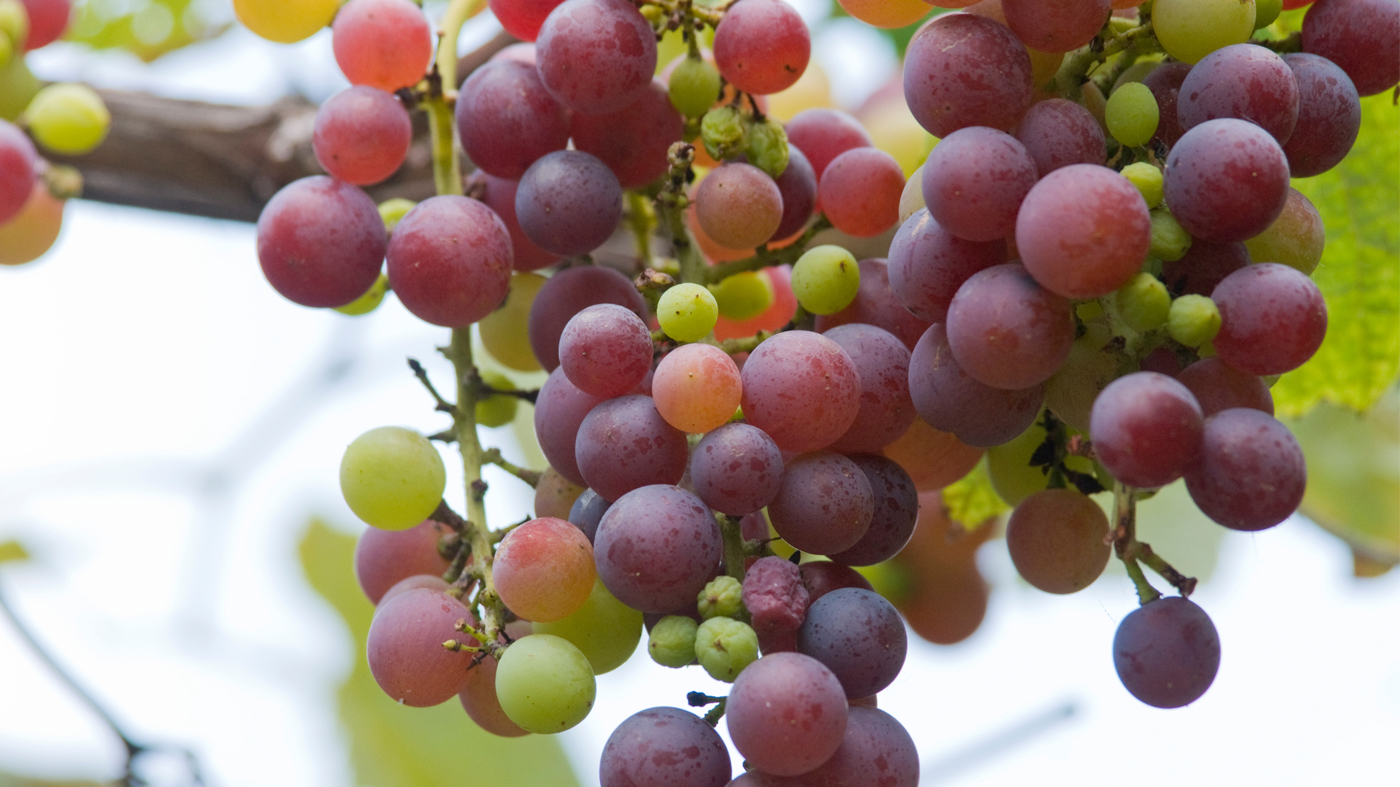

Grapevines
Vitis spp.

It may come as a surprise to many gardeners, but grapes can be grown in the Chicago area. Vitis labrusca, the American grape, also known as the fox grape due to its pungent, "foxy" flavor, grows extremely well; and even one of the French hybrids can survive the Midwest's cold winters. These little berries can be converted into juice, jellies, and jam. Some can be made into wine.
A grape is a berry, multiseeded with one ovary. Of all the small fruits grown in gardens, grapes and blueberries are the only true berries. Sometimes you hear grapes referred to as small fruits because of the size of the plant that produces them. Strawberries, raspberries, blueberries, currants, and gooseberries are also categorized as small fruits for the same reason. Cherries are small, but are not referred to as small fruit because they grow on trees.
The perennial grapevine grows 12 to15 feet in height, with a 3- to 5-foot spread, depending how it is pruned, and is therefore a good choice for small spaces. It grows up and out of the way and can be trained on a fence, arbor or trellis, with plenty of room left to grow other plants. Some gardeners consider the shade or privacy produced by the vines as valuable as the fruit.
Choosing Varieties
After deciding the purpose for the grapevine — fresh fruit, jam, or wine, choose a variety that grows best in your area. Chicago is the most northerly zone for grape growing and, although there are some choices, there aren't as many as southern gardeners have. Check to see what varieties other gardeners are growing. The Chicago Botanic Garden's Plant Information Service has recommendations for specific varieties hardy to Zone 5.
A few of the American grape cultivars recommended for juice are 'Swenson Red', 'Niagara', and 'Steuben'. They offer good flavor and, when they're ripe, their patriotic colors show — red, white, and blue, respectively. The seedless blue 'Concord' is a perfect grape for juice and jellies. 'Marechal Foch' is the only blue French hybrid that will grow in our region. It's a hardy, productive blue grape and makes good wine. If you're after raisins, the seedless, pinkish red 'Reliance' can be dried for that purpose.
Selecting A Site
When choosing a planting site, look for a sunny spot with excellent drainage and good air circulation, but no gale-force winds. Wind can cause much damage to crops. The fruit and vines can be injured, the soil will dry more quickly, and heavy winds can destroy the vine's support.
Consider a soil test. The test will give you information on soil pH and soil structure, and recommend amendments, if necessary. Grapes aren't too fussy about soil. They prefer a slightly acidic soil with a pH of 6, and grow well on sandy or clay soils. They don't like wet feet. If the soil holds water after a storm for over 3 hours, it's too wet. Move your site to one that drains in less time, or amend your soil at least one year before planting according to soil-test recommendations.
Planting and Pruning
Plant in early spring, as soon as the soil can be worked. Prune out any broken roots on your small plant, and position the remaining roots in a hole large enough to give the roots plenty of room to grow. Set the plant at the same height as it grew at the nursery. Prune the above-ground growth to the single strongest stem, leaving only two buds. A sturdy, 2-foot-tall support will do for the first year, but a more permanent structure will be needed by the second year. The method for yearly pruning depends on the type of grape and the type of support. For specific pruning guidelines, consult Plant Information's fact sheet #36, Pruning Grapevines.
Grapes can have a few problems. Downy or powdery mildew can threaten, especially during prolonged wet weather. Encourage airflow through the vines by annual pruning. Sanitation is key — regularly weed and remove fallen leaves or other plant debris that might harbor insects or disease. Leafhoppers and Japanese beetles can attack the foliage. Raccoons and birds are the two constant pests of grapes. Netting helps keep them at bay, and a radio left on constantly at harvest can help keep them at bay.
The rewards of viticulture are many: delicious fruit and all its byproducts; shade; privacy; and vivid fall foliage, ranging from yellow to gold to bronzy browns for table grapes and reds for wine grapes. Even the leaves are edible. Can you think of any other fruit that has so many virtues and takes up so little space?

